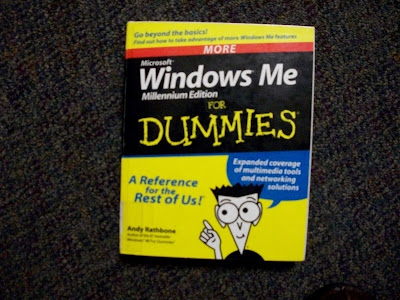Hi again! Last week I announced that I had too much
stuff for one Back to School Special. With that said, welcome to part two.
NOW
ON TO THE STORY
This
atlas, published in the lead-up to the Millennium celebrations, is unique from
other atlases in that it simultaneously deals in geography and history. That is
to say, it goes from country to country and continent to continent, but also
features a timeline of events unique to each group of countries and continents.
Again we see the theme of preserving history, but this volume ups the ante by
fitting bits of history into a larger global context. It’s an ambitious work,
too, because it traces everything from humanity’s beginnings up to the year
2000…This may prove a little unsettling and definitely sobering for some
readers.
By looking at humanity as part of a larger whole, it will become clear
that we still have a long way to go if we want to make the Millennium Dream a
reality, even if we have come a long way since we first walked this earth.


If
you had a computer in 2000, chances are you ran Windows Millennium Edition.
Unless you ran Windows 98, in which case you may safely ignore this section...but
I digress.
The
For Dummies series began in 1991 with DOS For Dummies. The series
didn’t really take off into the popular culture until around the turn of the
millennium, at which point the range expanded to cover just about every topic
imaginable. Unfortunately, this bit of trivia is one of only two Millennium
connections; the other is that Windows released ME in 1999 or so.
This
particular volume answers just about every question you might have about
Windows Millennium Edition. At the moment, I’m typing this week’s entry on
Microsoft Word 2007, and my computer runs Windows 7. It is without a doubt the
most user-friendly iteration of Windows to date—previous versions were only
slightly less so.
From
2007 to 2008, I got to live my childhood dream of owning a Compaq Presario,
which I had once seen on a sweepstakes ad during Fox Kids’ “Where on Earth is
Carmen Sandiego?” (That was the animated series, not PBS’ game show.) My little
Presario ran Windows ME, and while I took to it very well, I can understand how
daunting its blocky and disorganized layout might have seemed to the less
computer-literate among us.
I only really had it for a short time before I
found that it would not upgrade at all, no matter what I did. In 2008, I traded
it in for an HP Media Center. That was a sad day, but it had to be done.
The
American Heritage Dictionary is one of the premier dictionaries out
there, along with Webster’s and the Oxford English Dictionary. While not
strictly a Millennium edition, this volume nevertheless contains new words that
had been coined up to 1998/1999. At the beginning, there are a series of
incredibly dense introductions about word usage, pronunciation, etc. by top
linguists and professors.
I
suppose the main connection here is that it makes room for new words while
allowing the old words to remain in place. Though the change from 1000 to 2000
was a time of pride, it was also a time of humility as the old guard made way
for the new. This dictionary is a perfect example of that because it
demonstrates the malleability of the English language, and how the public
lexicon evolves and changes over time.
As
far as I can gather, it fits in with the “time capsule” aspect of the
Millennium celebrations. This is the mother of all history books, almost like
the Oxford Atlas of World History, but times ten. It starts with the
beginnings of humanity and goes forward through history up to the 1998. Because
of its size and density, you would be unlikely to find it anywhere but in your
public library’s reference section. It comprised of four books:
|
1: The Ancient and Medieval World, prehistory-AD
1491
2: The Expanding World, 1492-1775 3: The Changing World, 1776-1900 4: The Modern World, 1901-1998.
Regrettably, I didn’t have much time to take a closer look at it. My mission that day was to look at and catalog whatever Millennium stuff Oak Lawn had, and I learned that they have more than I thought they did…a lot more! (Forgive the weird formatting. The list of four books does something very strange indeed...)
Uniquely, Volumes 2 and 4 are the thickest. I think they're organized and spaced by historical activity...Volume 2 covers the Age of Discovery from Columbus up until the American Revolution, and Volume Four concerns the 20th Century, in which we saw World War I; the Great Depression and World War II; the Space Race; the Cold War...
Although the history lesson ends at 1998, these books were published in 2000, which therefore makes this set a Millennium Artifact.
I have still more to show, but I would like to go back to the Oak Lawn Library and take a closer look at what I've taken pictures of. Maybe I'll save the rest of it for a "Winter Break Ends" special in January or February...
SEPTEMBER 8,
1999: National
Perspective: Clinton Set to Allow China Entry Into WTO
SEPTEMBER 8, 2000: Findings
Mixed On Gulf War Hazards
|








No comments:
Post a Comment